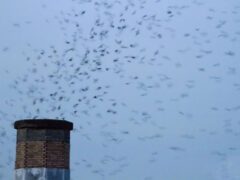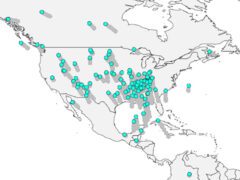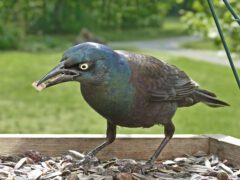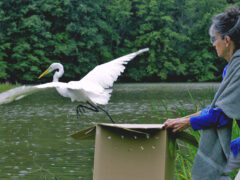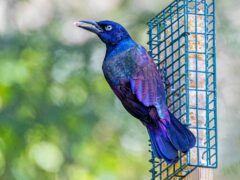The Four Keys to ID
- Size & Shape
A very small chickenlike marsh bird with rather long legs for its size, short neck, small head, and short, blunt bill.
Relative Size
Slightly larger than a Black Rail, smaller than a Sora.

 robin-sized
robin-sizedMeasurements
- Both Sexes
- Length: 5.1-7.1 in (13-18 cm)
- Weight: 1.4-2.4 oz (41-68 g)
- Wingspan: 11.0-12.6 in (28-32 cm)
© Steven Whitebread / Macaulay Library
- Color Pattern
Adults are brownish-yellow overall, mottled with dark streaks and thin white bars on the upperparts. The face and breast are paler yellowish, with a dark smudge on the cheek. The bill is yellowish. In flight, they have white underwings and white patches on the trailing edge of the upperwing. Juveniles are similar but yellow tones are duller, the nape, sides, and breast are finely barred, and the bill is duller.
© Hugues Brunoni / Macaulay Library - Behavior
Walks through vegetation to pick invertebrates and seeds from ground or vegetation. Seldom flies; if flushed, usually flies a short distance, then drops back into the wetland vegetation. Males sing an irregular clicking song on spring nights, sometimes for hours.
- Habitat
Nests in shallow freshwater sedge marshes; winters in wet meadows and marshes with cordgrass, saltgrass, sedges, and other low vegetation. Not found in deeper areas with tall vegetation, such as cattail marshes.
© Daniel Lane / Macaulay Library
Regional Differences
Ornithologists recognize two subspecies: noveboracensis of the United States and Canada and goldmani of the state of México, Mexico, which has a richer brown and white pattern above (but may be extinct).









